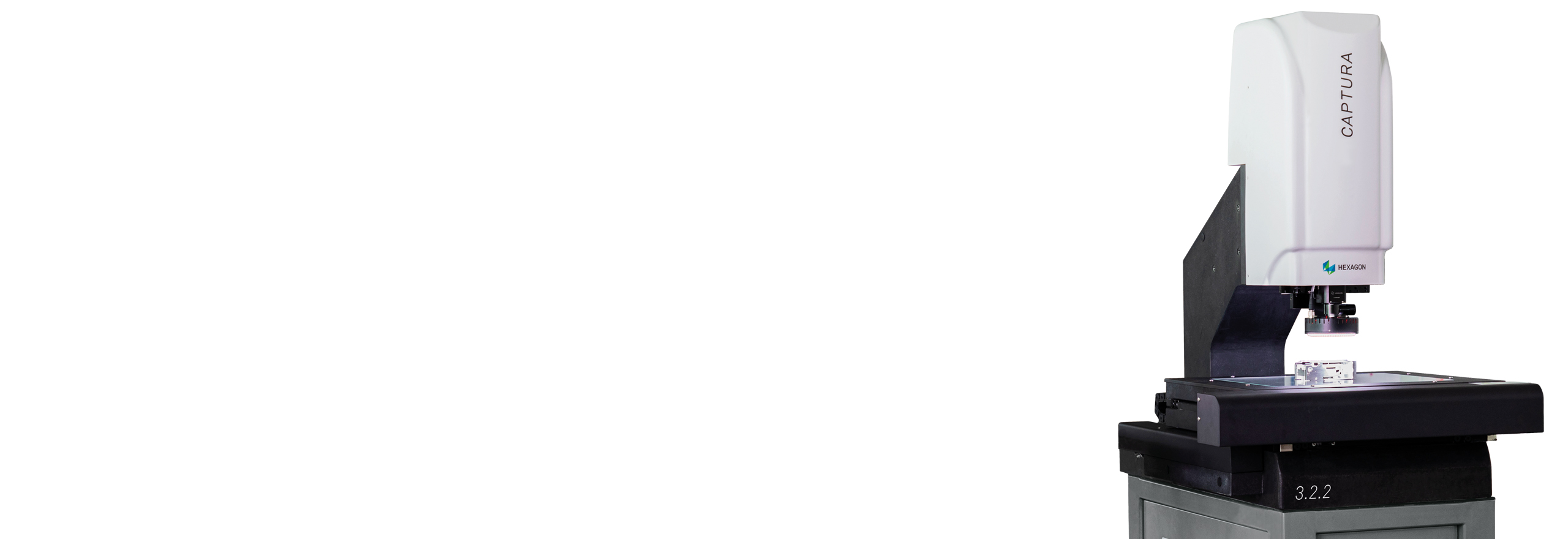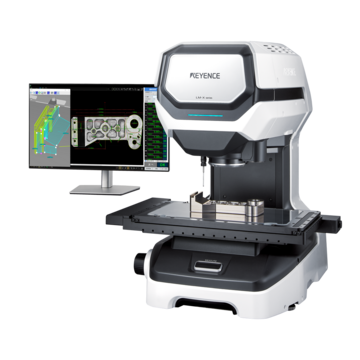How to prepare your team to use optical measurement systems effectively
How to prepare your team to use optical measurement systems effectively
Blog Article
Understanding Just How Optical Measurement Systems Enhance High Quality Control Processes
When you're looking to improve top quality control processes, recognizing optical dimension systems is vital. Let's explore the crucial elements that make optical measurement a game-changer in top quality monitoring.

The Basics of Optical Measurement Solutions
Optical measurement systems play a critical role in assuring product top quality across numerous sectors. These systems utilize light-based modern technologies to collect accurate data concerning physical attributes, such as measurements, surface area finish, and shade. By utilizing lasers, cameras, and sensors, you can achieve non-contact measurements that minimize the risk of destructive delicate items.
Understanding the fundamentals of these systems is basic for efficient quality assurance. They run on concepts like refraction, representation, and diffraction, enabling you to evaluate various materials and shapes. The accuracy and speed of optical dimensions enable real-time tracking, which aids you determine issues early in the manufacturing process.
Moreover, these systems can be incorporated with software program for improved information analysis, producing a comprehensive high quality monitoring approach. By leveraging optical measurement systems, you not only boost productivity yet likewise ensure your items meet rigid high quality criteria, eventually enhancing consumer satisfaction.
Sorts Of Optical Dimension Technologies
Numerous sorts of optical measurement technologies are readily available, each developed to meet certain demands in high quality control. You could come across laser triangulation, which determines distance by examining the angle of a shown laser beam of light. This innovation is perfect for catching accurate dimensions in 3D area.
An additional alternative is structured light, where you project a series of light patterns onto a surface area to develop a comprehensive 3D version. This approach functions well for complex geometries.
After that there's interferometry, which can detect minute changes in surface area profiles by assessing the disturbance patterns of light waves. This is specifically helpful for applications requiring nanometer accuracy.
You may also take into consideration optical comprehensibility tomography, which supplies high-resolution photos of internal features without damaging the things. Each technology offers different requirements, so selecting the appropriate one is necessary for accomplishing ideal high quality control results.
Secret Benefits of Optical Dimension in High Quality Control
When it involves quality control, leveraging optical measurement technologies can significantly improve precision and effectiveness. These systems allow you to catch detailed measurements rapidly, lowering the time required for assessments. You'll discover that optical measurements can determine also the tiniest flaws that might go undetected with conventional methods, ensuring item consistency.
Additionally, utilizing optical dimension systems often results in lowered waste and rework, as you capture concerns early in the production process. You'll likewise appreciate the non-contact nature of lots of optical approaches, which decreases damage to fragile elements throughout assessment. This flexibility enables for a more comprehensive variety of applications throughout different products.
With real-time data collection, you can make enlightened decisions promptly, simplifying your quality control processes (optical measurement system). Ultimately, integrating optical dimension right into your quality control technique not only boosts performance but likewise improves client contentment by delivering higher-quality products continually
Exactly How Optical Measurement Systems Improve Precision and Precision
Optical measurement systems improve precision and precision by enhancing dimension resolution, enabling you to spot also the tiniest variations. With real-time data analysis, you can make prompt changes and decisions, guaranteeing your procedures remain on track. This combination not just boosts product quality but also improves your quality assurance initiatives.
Enhanced Dimension Resolution
By leveraging sophisticated modern technologies, optical measurement systems significantly boost measurement resolution, causing enhanced precision and accuracy in quality assurance. These systems use high-resolution cameras and innovative algorithms to catch minute information that standard methods frequently miss. You'll discover a substantial distinction in the clearness of measurements, enabling you to determine also the smallest discrepancies from requirements. This enhanced resolution assists get rid of uncertainty, giving you with data that's both workable and dependable. Therefore, you can make even more informed choices and maintain tighter tolerances in your processes. Ultimately, enhanced dimension resolution not only improves item quality but also optimizes resource use, ensuring that you meet customer assumptions consistently.
Real-Time Data Evaluation
Although conventional measurement systems usually depend on postponed data processing, real-time information analysis in optical dimension systems transforms the way you keep track of optical measurement high quality. You'll experience enhanced accuracy since you can immediately contrast dimensions versus predefined requirements. Additionally, real-time information assists you build up useful insights over time, fine-tuning your top quality control processes.
Incorporating Optical Measurement Into Existing Quality Assurance Processes
Incorporating optical dimension into your existing high quality control procedures can substantially improve accuracy and effectiveness. By including optical measurement systems, you can simplify information collection, decreasing human error while increasing the speed of evaluations. Beginning by identifying crucial points in your assembly line where optical measurements will provide one of the most worth.
Next, train your team on the brand-new modern technology, ensuring they comprehend exactly how to use the systems properly. This training will certainly assist them interpret outcomes quickly and precisely.
You must also develop a method for incorporating optical information right into your existing quality management software. This integration enables real-time analytics and reporting, boosting decision-making.
Regularly evaluate the information and feedback from your group to identify any kind of locations for improvement. With these actions, you'll not only improve your quality control processes however likewise promote a culture of continuous improvement within your organization.
Case Researches: Effective Execution of Optical Dimension Equipments
In this area, you'll discover exactly how optical measurement systems have transformed top quality control in markets such as aerospace and vehicle production - optical measurement. You'll see real-world instances of how these innovations boosted precision and performance. These study highlight the substantial benefits of incorporating optical systems right into manufacturing processes
Aerospace Market Applications
As the aerospace industry deals with increasing demands for accuracy and effectiveness, firms are transforming to optical dimension systems to enhance their quality assurance procedures. These systems, like laser scanning and 3D imaging, supply accurate dimensions of parts, ensuring they satisfy rigid safety requirements. For instance, a leading aircraft supplier integrated optical measurement technology to evaluate turbine blades, minimizing evaluation time by 50% while boosting accuracy. An additional situation included a satellite producer utilizing optical systems to measure complicated geometries, which minimized mistakes in assembly and considerably decreased rework costs. By embracing these sophisticated modern technologies, you can not only improve your top quality control procedures yet additionally improve item reliability and security, ultimately leading to higher consumer fulfillment and count on in your aerospace items.
Automotive Manufacturing Success
Optical measurement systems have actually likewise made significant strides in the automotive production sector, where precision is key to vehicle efficiency and safety and security. BMW incorporated optical dimension for body setting up, making sure elements fit perfectly, which decreased rework and boosted production effectiveness. These instance research studies show just how optical dimension systems equip you to achieve tighter tolerances, minimize waste, and raise total item quality.
Future Trends in Optical Dimension and High Quality Control
While innovations in modern technology remain to improve the manufacturing landscape, the future of optical measurement and quality assurance looks promising - optical measurement systems. You'll see a substantial change in the direction of automation and AI assimilation, enabling systems to assess data in real-time. This means quicker decision-making and lowered human error, inevitably improving item quality
Additionally, as 3D imaging technology enhances, you'll gain from even more accurate measurements of complicated geometries, making it simpler to preserve tight tolerances. The surge of cloud-based services will certainly also allow you to gain access to data remotely, facilitating cooperation and enhancing procedures.
In addition, sustainability will play a crucial duty in future advancements. Anticipate optical measurement systems to focus on energy performance and waste reduction, aligning with international ecological goals. By welcoming these fads, you can assure your quality control processes remain cutting-edge, assisting your organization thrive in an increasingly affordable market.
Often Asked Inquiries
What Industries Advantage Many From Optical Measurement Systems?
You'll find markets like production, aerospace, and automotive benefit most from optical measurement systems. These industries count on specific measurements for quality control, making certain products fulfill strict standards and enhancing total operational efficiency.
Just how Do I Choose the Right Optical Dimension System?
To choose the right optical measurement system, analyze your certain requirements, consider the sort of measurements you require, assess the system's accuracy, and guarantee it fits your budget plan and operational demands.
What Are Typical Difficulties in Applying Optical Dimension Systems?
You'll deal with difficulties like integration with existing systems, making sure exact calibration, educating staff effectively, and managing prices. Identifying these obstacles early helps you establish techniques to conquer them and effectively implement optical dimension systems.

Exist Training Resources Available for Optical Measurement Technologies?
Yes, there're numerous training sources offered for optical dimension modern technologies. You can discover on-line training courses, webinars, and workshops supplied by industry experts or organizations. These sources can help you efficiently execute and utilize these advanced systems.
How Do Optical Measurement Equipments Compare to Traditional Measurement Methods?
Optical dimension systems provide better accuracy and speed compared to traditional approaches. They minimize human mistake, enable non-contact measurements, and supply real-time information analysis, making them much more reliable for various applications in quality assurance.
Verdict

Optical measurement systems improve precision and accuracy by boosting dimension resolution, permitting you to discover even the tiniest variants.By leveraging innovative technologies, optical measurement systems greatly boost dimension resolution, leading to improved precision and accuracy in quality control.Although typical dimension systems typically depend on postponed information handling, real-time data evaluation in optical dimension systems changes the method you keep an eye on quality.As the aerospace market encounters increasing demands for precision and efficiency, business are turning to optical measurement systems to improve their top quality control procedures. Exactly How Do Optical Measurement Equipments Compare to Typical Measurement Methods?
Report this page